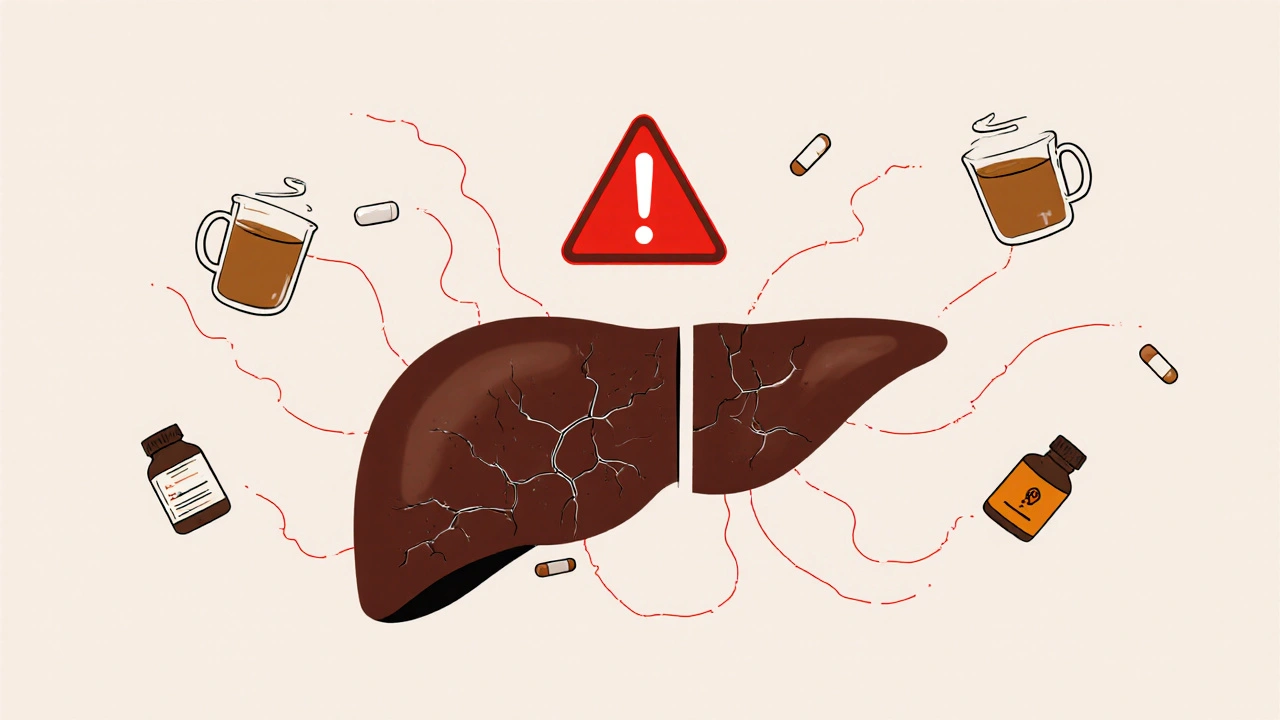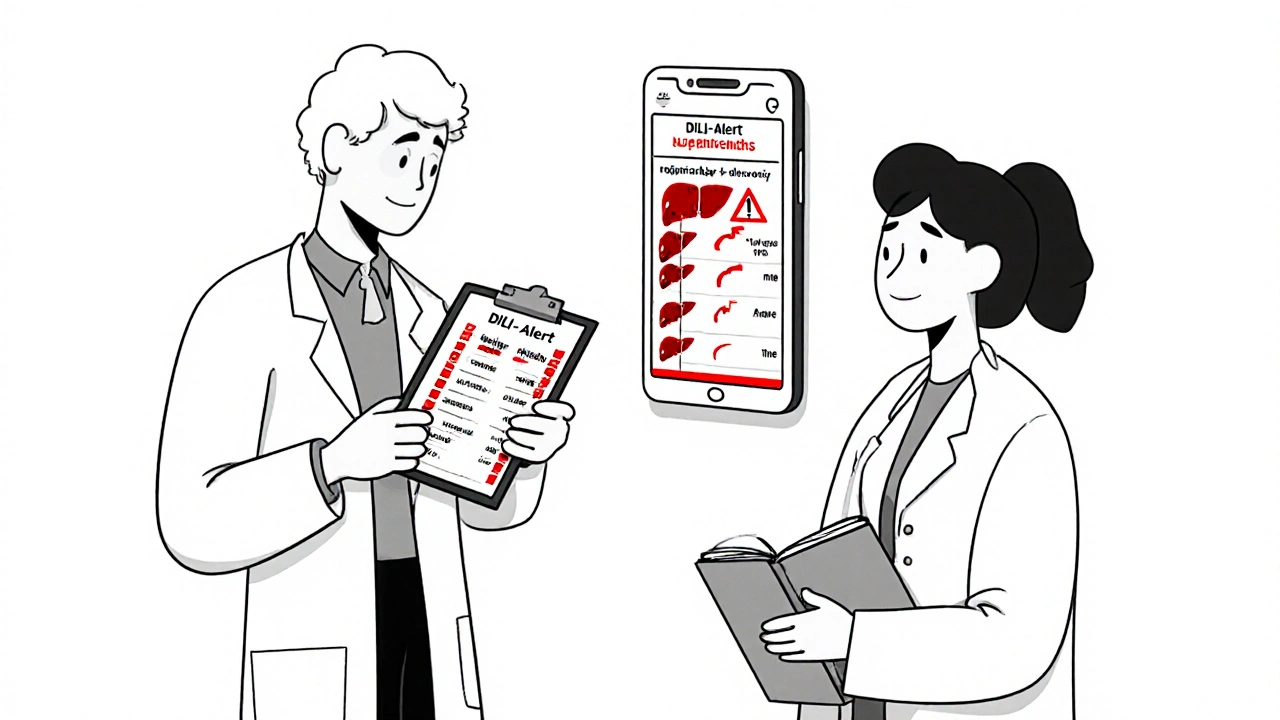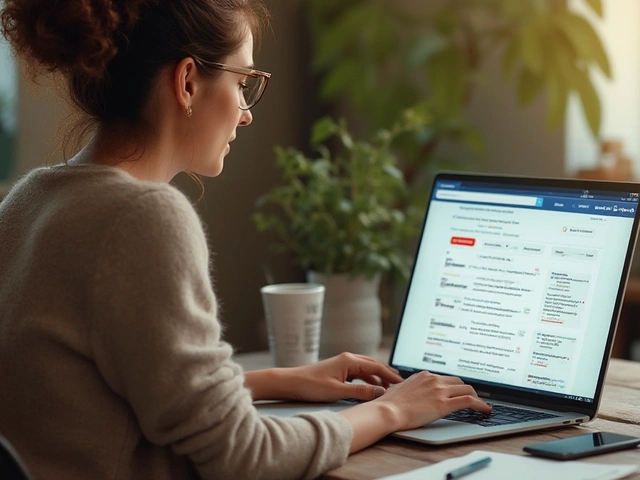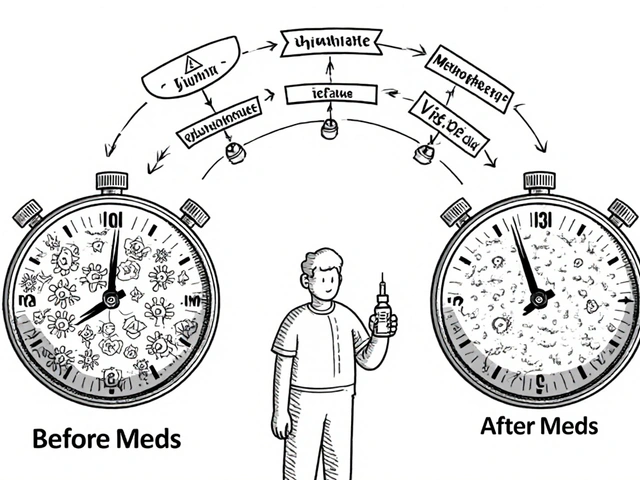
Medication Liver Safety Checker
Check Your Medication Safety
Enter the name of your medication or supplement to see if it may cause liver damage.
It’s easy to assume that if a pill is prescribed or sold over the counter, it’s safe. But your liver doesn’t care if it’s from a doctor, a pharmacy, or a health store. Every day, people start a new medication-antibiotics, painkillers, even herbal teas-and weeks later, they wake up yellow, exhausted, and in pain. By then, it’s often too late. Medication-related liver damage is silent, common, and preventable. And the signs? They’re not always obvious until it’s almost too late.
What Exactly Is Medication-Related Liver Damage?
Also called drug-induced liver injury (DILI), this happens when a medicine, supplement, or herb harms your liver. It’s not rare. In Western countries, about 13 to 19 out of every 100,000 people develop it each year. That’s more than you think. Antibiotics like amoxicillin-clavulanate are the biggest culprits, making up 16% of cases. But don’t ignore over-the-counter stuff. Acetaminophen (Tylenol) is the #1 cause of sudden liver failure in the U.S. when taken in excess. And herbal supplements? They’re behind 20% of cases in the UK, with green tea extract alone responsible for nearly 4 out of 10 of those.
The problem? Your liver doesn’t scream. It whispers. By the time you feel it, the damage is often advanced. Unlike a broken bone or a fever, there’s no quick test to confirm it. Doctors have to rule everything else out-viruses, alcohol, autoimmune disease-before they can say it’s the medication. That’s why so many people go weeks without a real answer.
How Do You Know It’s Your Medication?
Timing is everything. Most cases show up within 1 to 8 weeks of starting the drug. Antibiotics? Usually 15 days in. Anticonvulsants? Around 45 days. Herbal supplements? Could be 10 days or 10 months. That’s why people miss the connection. They think, “I’ve been taking turmeric for months-it can’t be that.”
The liver has a fingerprint. When it’s hurt by a drug, blood tests show one of three patterns:
- Hepatocellular: ALT and AST levels spike above 5 times normal. This is the most dangerous. In isoniazid cases, ALT can hit over 1,000 IU/L.
- Cholestatic: Alkaline phosphatase and GGT rise, often 3 to 10 times higher. You’ll feel itchy. Really itchy. That’s because bile isn’t flowing right.
- Mixed: Both patterns show up. Common with amoxicillin-clavulanate.
Here’s what’s scary: 68% of people who develop DILI are misdiagnosed at first. They’re told they have the flu, stress, or a stomach bug. One Reddit user wrote, “I had itching for two weeks on amoxicillin. My doctor said it was an allergic rash. By the time they checked my liver, my enzymes were 15x normal.”
Red Flags: When to Run to the ER
You don’t need to wait for a blood test. If you’ve started a new drug in the last 8 weeks and you have jaundice (yellow skin or eyes) plus any two of these, get help immediately:
- Dark urine-like cola
- Pain or pressure under your right ribs
- Unexplained nausea or vomiting
- Severe itching without a rash
- Extreme fatigue that doesn’t go away
Acetaminophen is different. If you took more than 4,000 mg in 24 hours (or 2,000 mg if you have liver disease), and you feel sick within 24 hours, don’t wait. N-acetylcysteine-the antidote-works best if given within 8 hours. Every hour you delay, the chance of survival drops by 10%.
And don’t assume “natural” means safe. Green tea extract, kava, and even high-dose vitamin A have landed people in intensive care. A 2023 patient survey found 76% of people with DILI started feeling symptoms within 30 days of taking a new supplement-but only 32% connected it to the product themselves.

Who’s at Highest Risk?
It’s not just about what you take-it’s who you are.
- People over 50: Liver function slows with age.
- Women: More likely to develop cholestatic DILI.
- People with existing liver disease: Even small doses of acetaminophen can be dangerous.
- Those who drink alcohol: Combining alcohol with liver-toxic meds triples or quadruples your risk.
- People taking multiple medications: More drugs = more chances for bad interactions.
Genetics play a role too. If you carry the HLA-B*57:01 gene, flucloxacillin-a common antibiotic-can cause liver failure in 80 times more people than average. That’s why some countries now test for it before prescribing.
What You Can Do to Prevent It
You can’t avoid all meds. But you can protect your liver.
- Keep a full medication log: Write down every pill, capsule, tea, and powder you take-even “just a daily turmeric.” Include dose and start date.
- Never exceed acetaminophen limits: 3,000 mg per day max for healthy adults. 2,000 mg if you have liver issues. Many cold and pain meds contain it. Check labels.
- Avoid alcohol with liver-risk drugs: That includes antibiotics, statins, and even some antidepressants.
- Ask your doctor about liver tests: If you’re on isoniazid, methotrexate, or certain antiseizure meds, get ALT checked every 4 to 6 weeks.
- Be skeptical of supplements: If it’s not regulated, it’s not proven safe. The FDA doesn’t test herbal products before they hit shelves.
There’s new tech helping too. The FDA just approved a free app called DILI-Alert that scans your meds against a database of 1,200 liver-toxic substances and warns you in real time. It’s available on iOS and Android.

What Happens After Diagnosis?
The first step? Stop the drug. Always. No exceptions. Most people recover fully if caught early. But if the damage is severe-like acute liver failure-you may need a transplant. About 13% of sudden liver failure cases in the U.S. are caused by medications. That’s more than hepatitis A, B, or C combined.
Recovery can take weeks to months. Some people have permanent scarring. Others never fully bounce back. That’s why early action saves lives.
Doctors use a tool called RUCAM to score how likely a drug is to blame. It looks at timing, other causes, and how liver enzymes change after stopping the drug. It’s not perfect-but it’s the best we have.
Why This Is Getting Worse
DILI cases have jumped 27% in Europe since 2015. In the U.S., hospitalizations rose from 8.5 to 12.3 per 100,000 people between 2010 and 2020. Why? More people are using supplements without knowing the risks. One study found 68% of supplement users had no idea their product could hurt their liver.
Doctors aren’t always trained to spot it either. Only 42% of primary care physicians correctly identified high-risk drugs in a 2023 survey. And patients? They’re told to “just push through” fatigue or itching. That’s how small problems become emergencies.
The future? AI is helping. Pilot programs using machine learning to flag risky drug combinations have cut diagnosis time by 35%. That could prevent over 1,200 liver failures a year in the U.S. alone.
But technology won’t fix what people don’t know. The real solution? Awareness. Education. And listening to your body before it’s too late.



